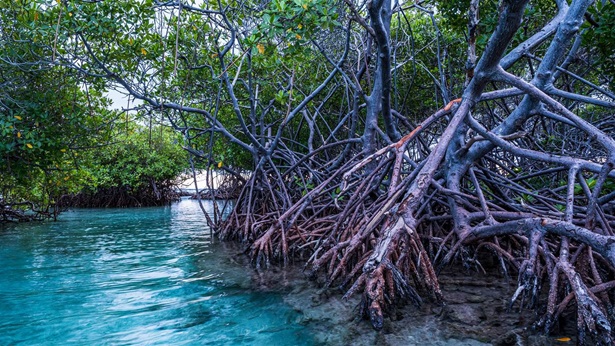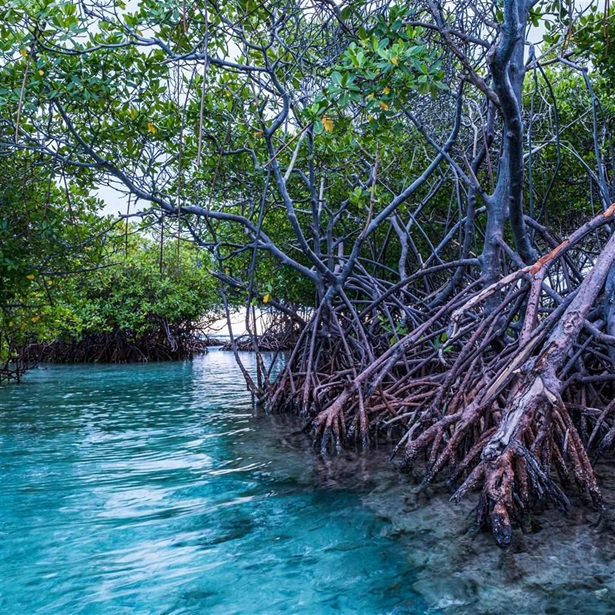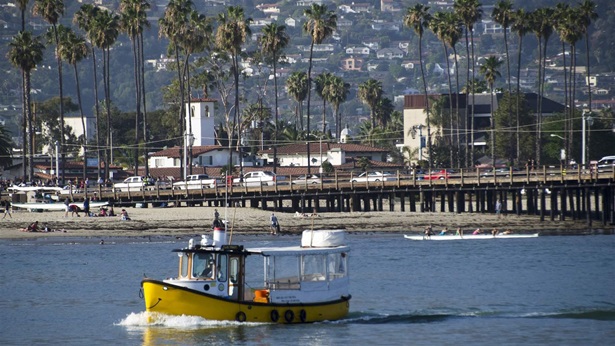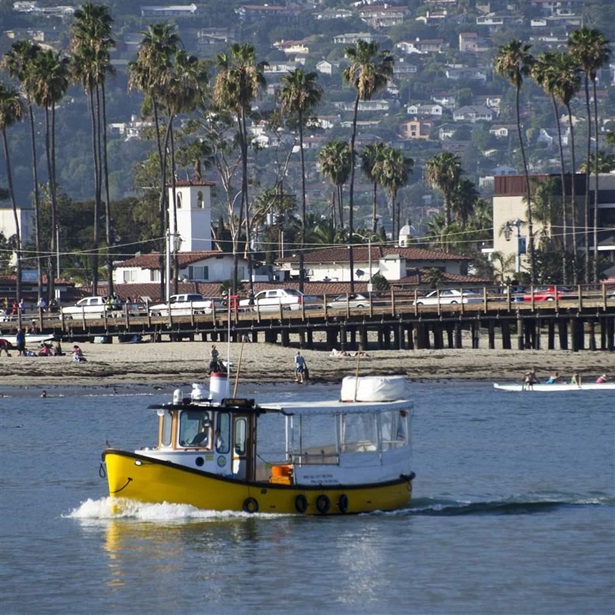Puerto Rico Moves to Limit Coastal Damage From Hurricanes and Other Threats
New plan will protect wetlands and prioritize nature-based solutions to safeguard communities
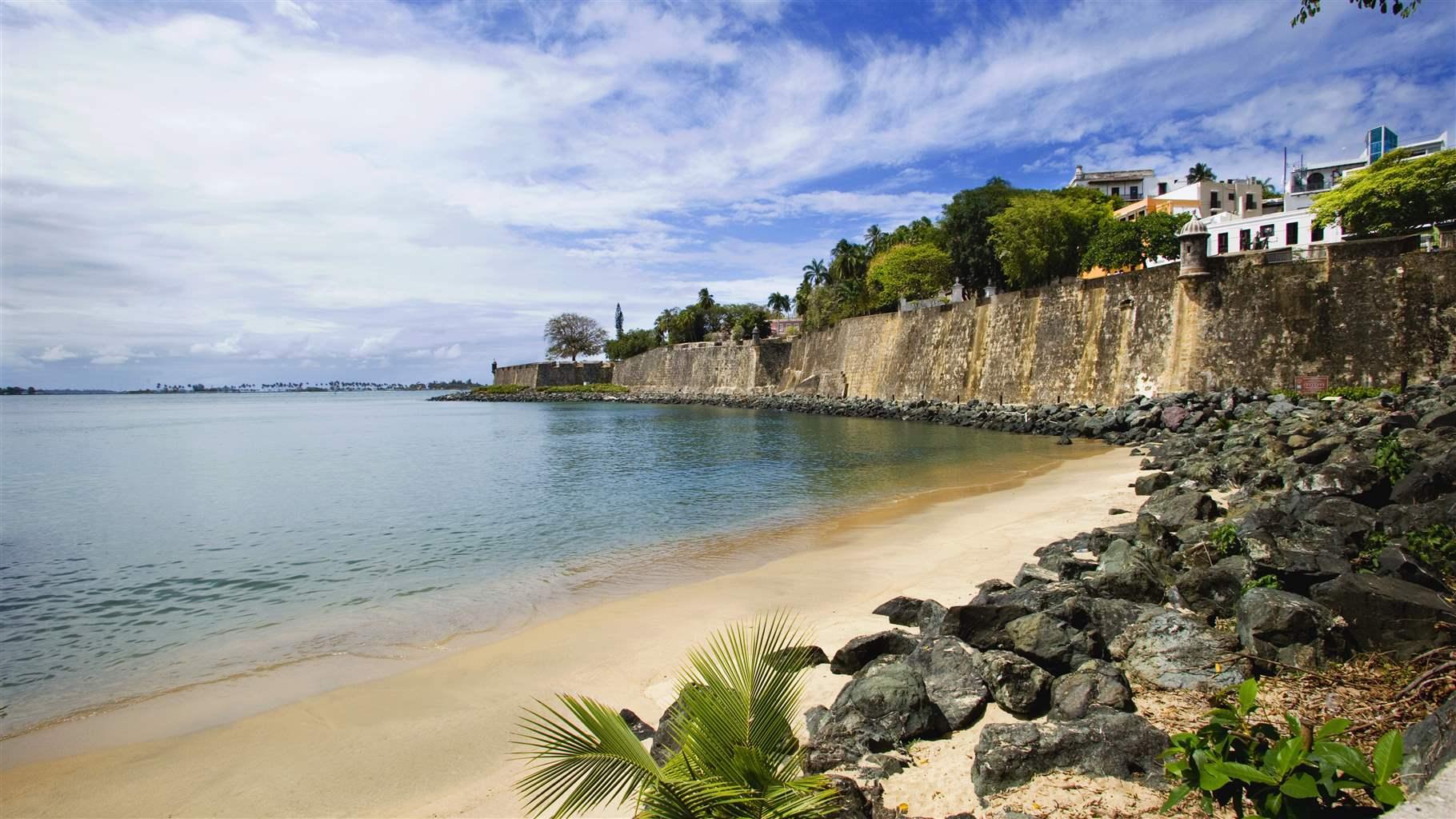
Puerto Rico is taking steps to restore and enhance its coasts and make communities more resilient to storms in a new plan recently approved by the National Oceanic and Atmospheric Administration.
Environmental leaders on the island, which has been battered by hurricanes in recent years, laid out a coastal management strategy for the next two years that prioritizes protecting vulnerable areas and underserved communities. Some of the priorities include shoring up natural features, such as mangroves, beaches, and dunes, that can help absorb storm surge, and building other natural barriers, including living shorelines—reefs sometimes constructed from oyster shells—that can absorb wave energy and help reduce flooding. And the plan calls for enhancing habitats for fish and wildlife, a move that is proven to make ecosystems healthier and stronger.
NOAA’s approval of the strategy means that Puerto Rico will receive federal money to help implement the plan and is also now eligible to apply for federal grants and technical assistance.
The Puerto Rico Department of Natural and Environmental Resources developed the new coastal management strategy for 2023-25 as part of the island’s participation in the federal Coastal Zone Enhancement Program, which encourages states and territories to identify needs and opportunities for their natural coastal areas.
The department developed the strategy over the past year using scientific data, expert advice from researchers, and public feedback collected from a survey and interviews.
The plan gives a big boost to the island’s coastal management efforts by creating the Coastal Resilience Program to address three priorities:
- Protecting wetlands. The habitat can help safeguard coastlines but faces threats including pollution, poorly planned coastal development, filling or excavating for coastal structures, and altered water flow patterns.
- Reducing coastal hazards. Nature-based solutions such as living shorelines can help reduce erosion and lessen some of the impacts from storms and floods.
- Lessening cumulative and secondary impacts, such as poorly planned development or damaging human activities on beaches, dunes, wetlands, and barrier islands. Restoration of these areas could help mitigate loss, fragmentation, or degradation of habitats such as mangroves and wetlands.
The department will make rule changes, conduct research, and develop plans for projects that fall under these five main components:
- Provide adaptive restoration guidance. Standardize best practices for the design, construction, monitoring, and maintenance of successful restoration projects that maximize habitat and resilience benefits.
- Promote natural and nature-based infrastructure. Identify the effectiveness and suitability of projects. Landowners, planners, coastal engineers, and others will use the guidance for projects to reduce coastal flooding and storm surge, erosion, and flooding from runoff.
- Pursue regulatory changes. Explore removing regulatory impediments to permitting nature-based infrastructure and prioritize its use.
- Explore mutually beneficial partnerships. The federal and Puerto Rican government and nongovernmental organizations should outline shared goals and priorities.
- Identify funding sources, namely the most promising grant opportunities.
Puerto Ricans rely on their coasts to sustain the island’s vibrant culture, environment, and economy. This new comprehensive plan will help protect all of that and prepare Puerto Rico for a future that is almost certain to include more extreme weather and other challenges to coastal communities.
Yasmin Vélez-Sánchez manages The Pew Charitable Trusts’ work to conserve marine life in the U.S. Caribbean.

